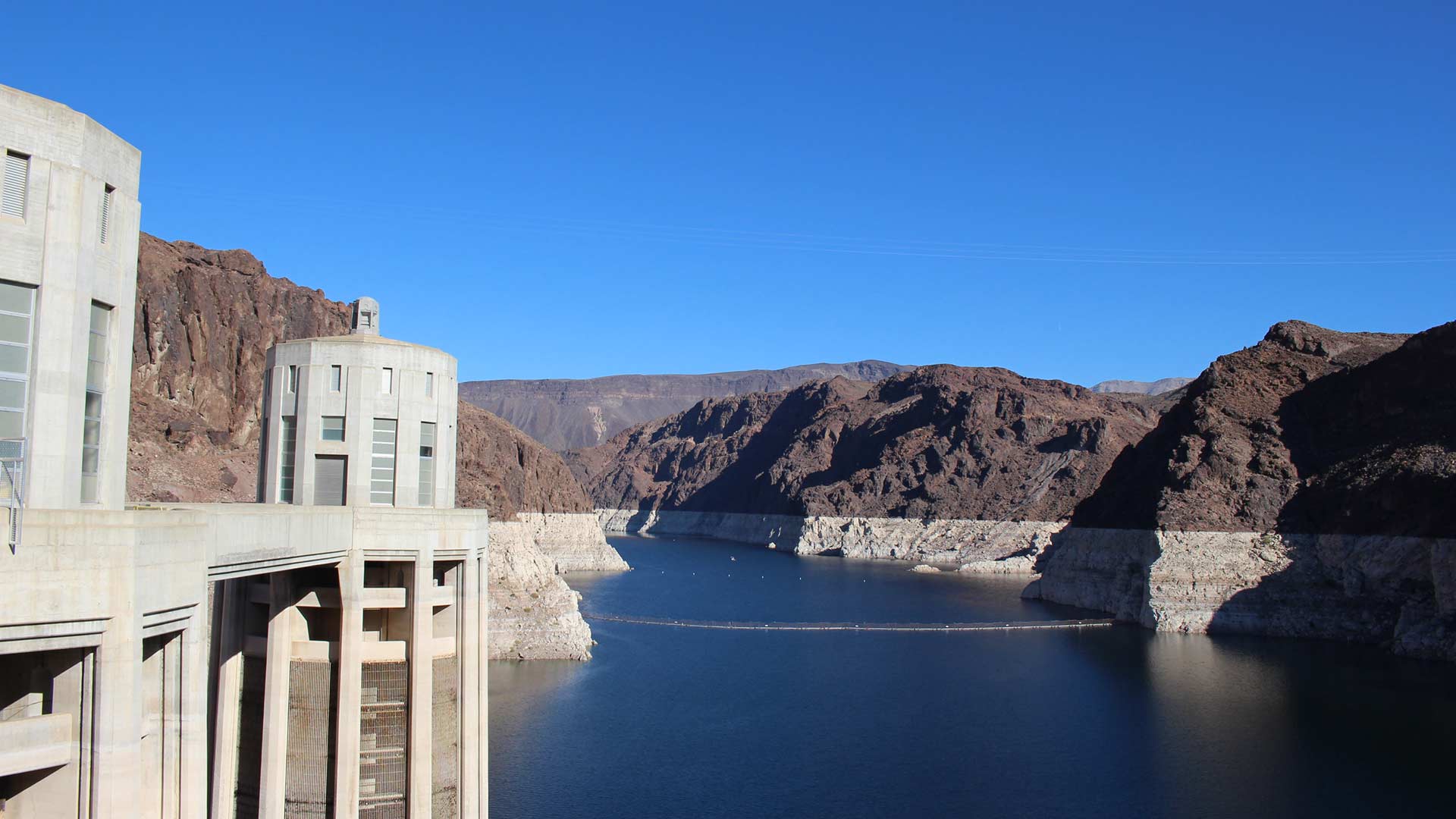 Lake Mead outside Las Vegas, Nevada, serves as the Colorado River's largest reservoir and a key water source for Arizona, California, Nevada and Mexico.
Lake Mead outside Las Vegas, Nevada, serves as the Colorado River's largest reservoir and a key water source for Arizona, California, Nevada and Mexico.
High snowpack in the southern Rocky Mountains this winter will likely stave off a shortage declaration in the Colorado River watershed in 2020, relieving pressure on water managers attempting to navigate future scarcity.
New data from U.S. Bureau of Reclamation models show a lessened risk of a key Colorado River reservoir dropping far enough to trigger a first-ever shortage declaration. Snowpack in the Upper Colorado River Basin is at 138 percent of the long-term median, a level not seen in mid-March since 1997
 VIEW LARGER Upper Colorado River Basin snowpack is currently at 138 percent of the long term median.
VIEW LARGER Upper Colorado River Basin snowpack is currently at 138 percent of the long term median. Forecasts for Lake Powell on the Arizona-Utah border have improved since early February, with the reservoir expected to see 92 percent of average inflow through the end of September.
But federal officials are quick to remind that one wet winter won’t solve the Southwest’s structural water problems.
“These developments may lessen the chance of shortage in 2020,” said Reclamation Lower Colorado Regional Director Terry Fulp in an emailed statement. “However, one near- or even above-average year will not end the ongoing extended drought experienced in the Colorado River Basin and does not substantially reduce the risks facing the basin.”
A shortage declaration is tied to the level of Lake Mead, the nation’s largest reservoir, and a key water source for California, Arizona, Nevada and Mexico. If it drops to an elevation of 1,075 feet at the beginning of a calendar year, the federal government can declare a shortage, forcing some users, mostly in Arizona and Nevada, to cut back.
In the latest Bureau of Reclamation model Lake Mead’s elevation is projected to be at 1,080 feet in elevation at the end of 2019.
Lake Mead has been flirting with the shortage level for years. A combination of voluntary cutbacks among big water agencies in the Southwest and sufficient snowmelt runoff has kept the reservoir from dropping below the shortage threshold.
The added moisture gives some flexibility to Colorado River water managers currently trying to wrap up Drought Contingency Plans, a portion of which requires Congressional approval and a presidential signature. Arizona and California have been the holdouts on that multi-state deal. Both states missed a series of federal deadlines meant to speed up agreement on a series of steeper cutbacks should reservoirs continue to drop.
This story is part of a project covering the Colorado River, produced by KUNC and supported through a Walton Family Foundation grant. KUNC is solely responsible for its editorial content.

By submitting your comments, you hereby give AZPM the right to post your comments and potentially use them in any other form of media operated by this institution.